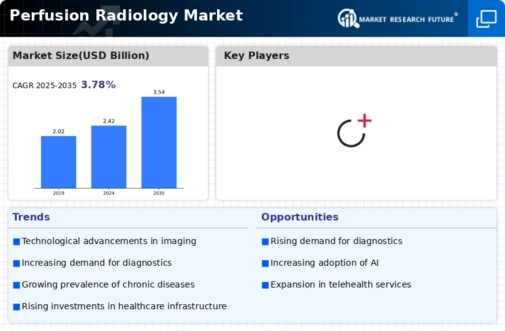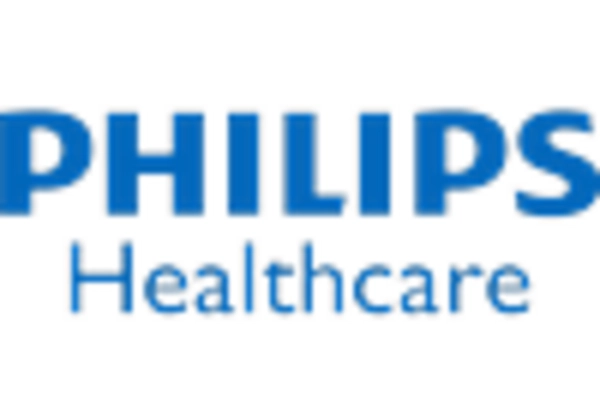Market Share
Perfusion Radiology Market Share Analysis
Coronary Computed Tomography Angiography (CTA) paired with Computed Tomography Perfusion (CTP) imaging has significant potential in assessing various aspects of ischemic heart disease. This combination aids in diagnosing the disease and determining the most suitable treatment for patients. Numerous organizations are actively engaging in research and development efforts to enhance the effectiveness of perfusion radiology in diagnosing diseases with greater accuracy in both children and adults.
Several agencies, including the National Natural Science Foundation of China, the Beijing Municipal Natural Science Foundation, and the Health Industry Special Scientific Research Project, are taking proactive measures to support research and development in this field. Research centers are also dedicating considerable efforts to conduct rigorous studies and tests on perfusion imaging technology. These initiatives are expected to propel the growth of the perfusion radiology market in the foreseeable future.
Coronary CTA and CTP imaging play a crucial role in comprehensively evaluating the broad spectrum of ischemic heart disease. By combining these technologies, healthcare professionals can obtain a more detailed understanding of the disease, enabling them to make accurate diagnoses and prescribe appropriate treatments. This integrated approach proves particularly valuable in enhancing the overall effectiveness of healthcare interventions for patients with heart-related issues.
The importance of accurate diagnosis cannot be overstated, and perfusion radiology emerges as a key player in achieving this goal. As technology continues to advance, the collaboration between coronary CTA and CTP imaging becomes increasingly vital in providing comprehensive insights into ischemic heart disease. This not only aids in disease identification but also contributes to the development of tailored treatment plans, improving patient outcomes.
To support the advancement of perfusion radiology, various organizations are channeling resources into research and development initiatives. The National Natural Science Foundation of China, along with other notable foundations such as the Beijing Municipal Natural Science Foundation and the Health Industry Special Scientific Research Project, recognizes the potential of perfusion imaging technology. These organizations are actively funding projects aimed at improving the diagnostic capabilities of perfusion radiology, ensuring its applicability across different age groups.
The inclusion of children in the focus of research and development efforts is particularly noteworthy. Children often present unique challenges in medical imaging, and adapting technologies to suit their specific needs is crucial. By investing in research that addresses pediatric applications of perfusion radiology, organizations are contributing to the development of more comprehensive and inclusive diagnostic tools.
Moreover, research centers are at the forefront of driving innovation in perfusion imaging technology. Through rigorous initiatives, these centers are conducting in-depth studies and tests to refine the capabilities of coronary CTA and CTP imaging. This commitment to research not only expands our understanding of ischemic heart disease but also ensures that healthcare professionals have access to cutting-edge tools for accurate diagnosis and effective treatment planning.
The collaborative efforts of various organizations and research centers are poised to have a substantial impact on the perfusion radiology market. The market is expected to experience growth as advancements in technology lead to more refined and precise diagnostic capabilities. This growth is not only driven by the increased adoption of perfusion imaging technology but also by the expanding scope of applications, including pediatric radiology.
As the perfusion radiology market continues to evolve, it is essential to recognize the broader implications for healthcare. Accurate and timely diagnosis is a cornerstone of effective healthcare delivery, and the integration of coronary CTA and CTP imaging contributes significantly to this goal. Patients stand to benefit from more personalized and targeted treatments, leading to improved overall outcomes and quality of life.

















Leave a Comment